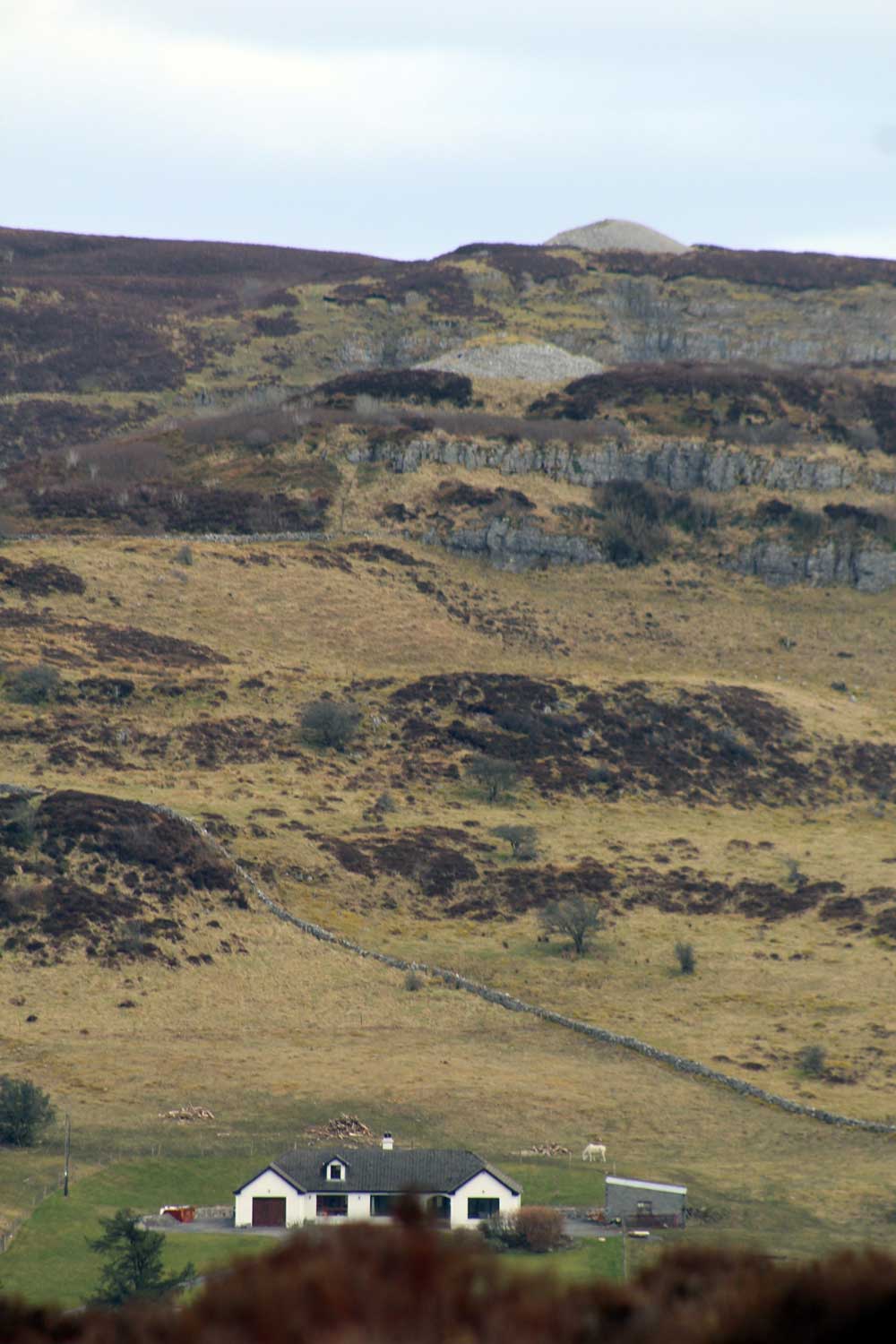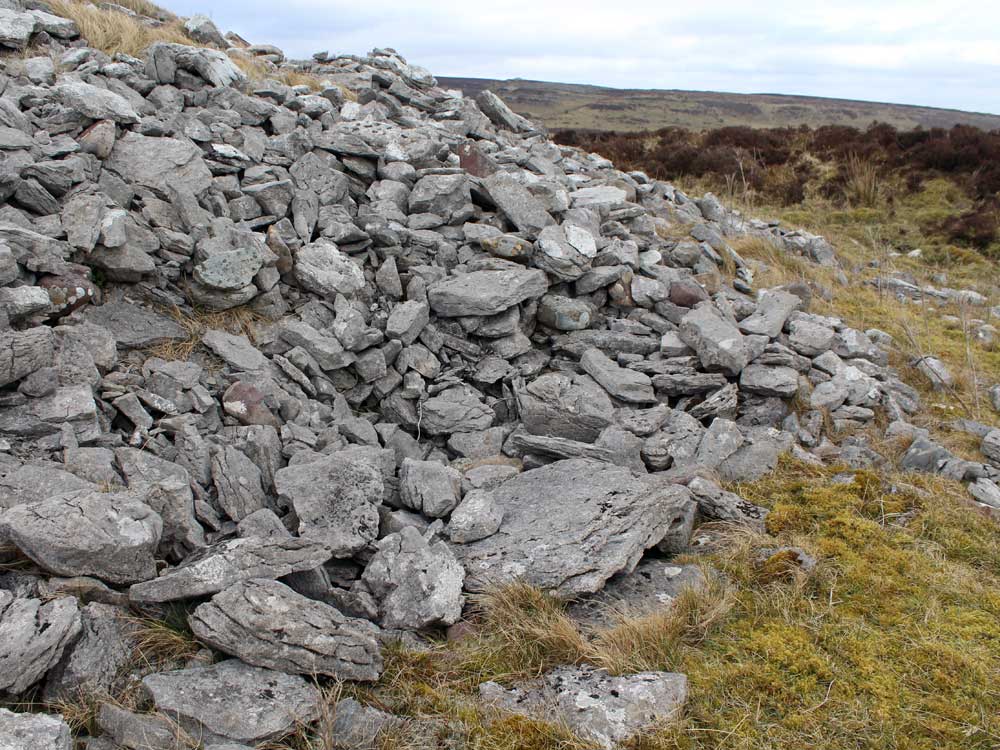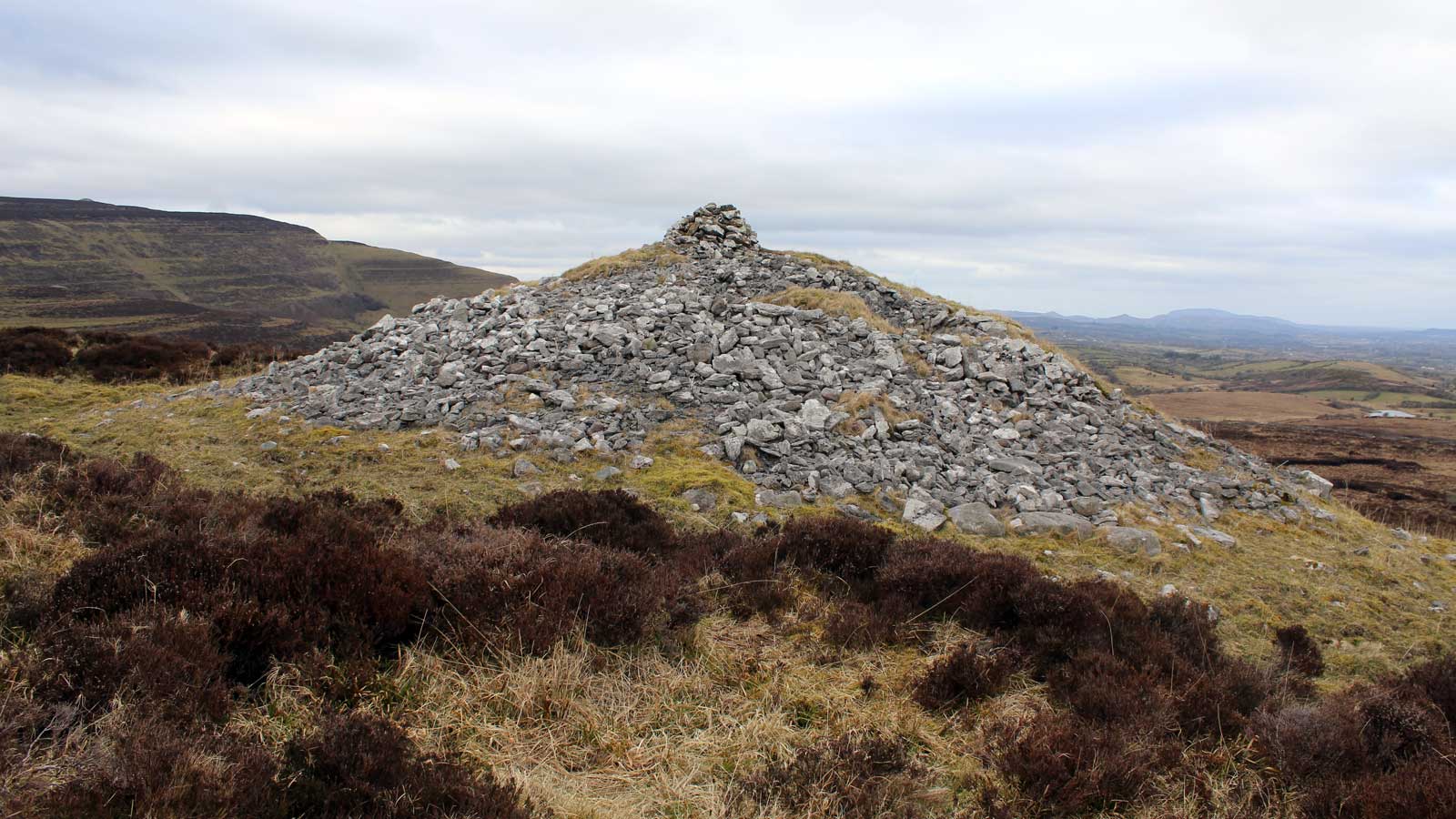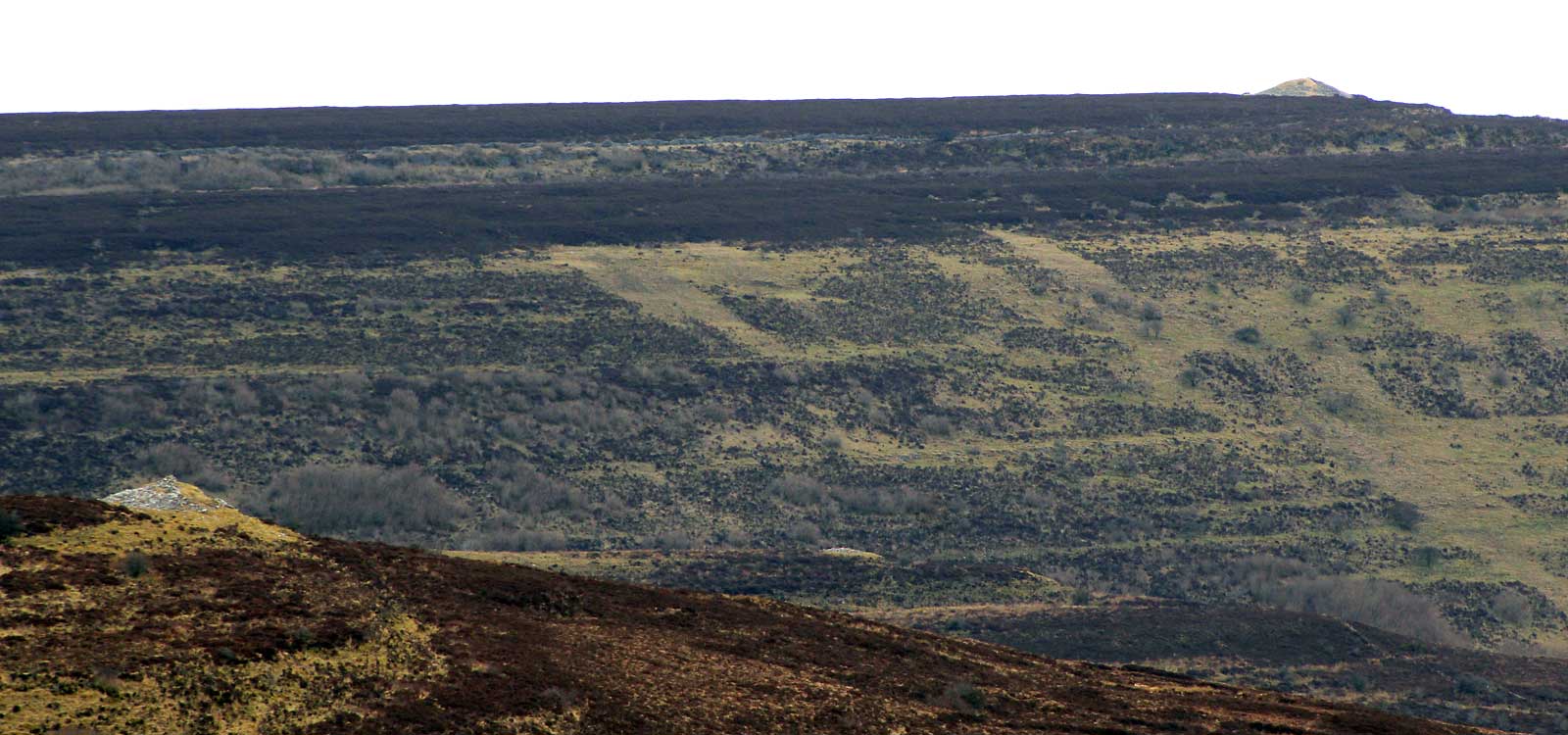Treanmacmurtagh Cairn
Treanmacmurtagh Cairn occupies a central ridge and prominent position within the Bricklieve megalithic complex. The site commands a wide view, which includes most of the cairns in the Bricklieve Mountains. The large cairn is located half way between Carrowkeel and Kesh Corran, just to the north of the summit of the hill.
The unopened cairn is oval in shape, about 23 meters east to west by 18 meters north-south and 3 to 4 meters high. It is constructed on the edge of the north-facing ridge, and so appears much taller from the north side, where many stones have slipped down.

The cairn is mainly composed of locally-quarried limestone, mixed with some chunks of red sandstone erratics, and a kerb of small sandstone boulders. The smaller mound on top of the cairn is called a 'pinnacle'. These Pinnacles were erected by sappers during the Ordinance Survey of County Sligo in 1837.
Treanmacmurtagh cairn was used as a triangulation marker, indicating a point 809 feet above sea level. Many other neolithic passage-graves in County Sligo were used as triangulation points in 1837, including Cairn K, Kesh Cairn, Knocknashee, Shee Lugh, Doomore and Queen Maeve's cairn.

A line of small kerbstones using round sandstone erratic boulders runs around the base of the cairn on the south side. A large flagstone near the top of the monument indicates the presence of a chamber like those at Carrowkeel close by to the east.
Archaeologist Etienne Rynne examined the cairn in 1969 and found two Bronze age cists inserted into the south and west side of the monument. The covering slab of one of these cists, a large limestone flag, is visible today. Bronze age pottery and burials were also found in Cairn B, Cairn K and Cairn O in Carrowkeel.
SL040-016002: Treanmacmurtagh cairn.
Inside the west edge of the cairn of a possible passage tomb (SL040-016001-). Discovered in 1966 and investigated by Etienne Rynne (1969, 145-50). Described as an irregular but roughly quadrangular cist (0.8 meters north to south; 0.5 meters east to west) with sides composed of single slabs set on edge, apart from southwest and southeast corners which were closed by two upright stones and by surrounding cairn material respectively.
The floor was limestone bedrock. The cist was covered by a single capstone (Length 1.15 meters; width 0.52 meters; height 0.18 meters) supported on the north and south and possibly the east side by horizontally-laid slabs on top of the sidestones. Small limestone fragments and some unburnt human bones partially filled the cist. The primary burial was found to be the cremated remains of an adult.

Two small decorated potsherds were found amongst the cremated bones. In addition, the crouched skeleton of a 10 to 12 year old child with a portion of a small decorated pottery vessel (Height 8.8 cm; diameter 12.5 cm at rim and 4.8 cm at base) were found.
The investigator suggests that the cist is 'a secondary feature inserted into a pre-existing cairn' (Rynne 1969, 149). A piece of bone from the skeleton has been radiocarbon dated to 3550+-40 BP (GrN-12274) (Ó Ríordáin and Waddell 1993, 37). (Waddell 1990, 133; Ó Ríordáin and Waddell 1993, 131)
Local reports suggest that three standing stones to the north of Treanmacmurtagh cairn, which were removed during land clearing activities in the seventeenth century. This may well be true, as there are many high stone walls in the area to the north of Treanmacmurtagh. It can clearly be seen from here that cairns B and F in Carrowkeel are on a line with Treanmacmurtagh Cairn.


